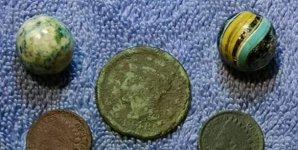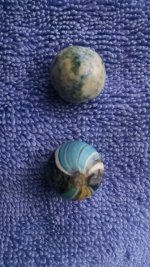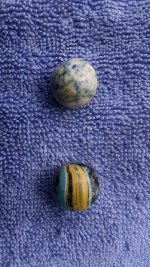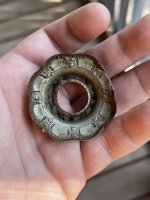against the wind
Gold Member
- Jul 27, 2015
- 24,797
- 24,977
- 🏆 Honorable Mentions:
- 1
- Detector(s) used
- E-trac, Excalibur, XP Deus, & CTX 3030.
- Primary Interest:
- All Treasure Hunting
I was hoping that Cheese could put an age and name on these 2 marbles that were found while detecting.
Also the approximate value.
They were recovered by a friend.
Also the approximate value.
They were recovered by a friend.
Attachments
Last edited:









